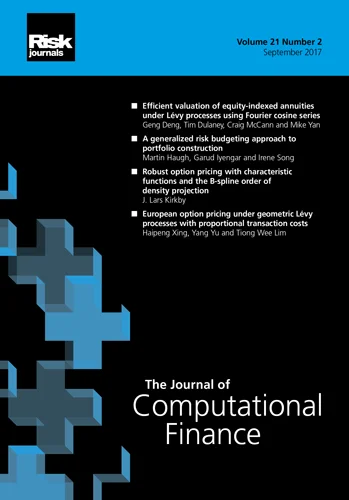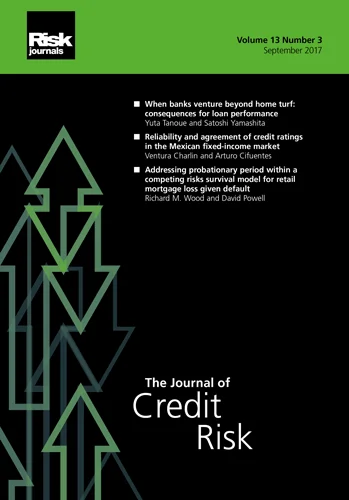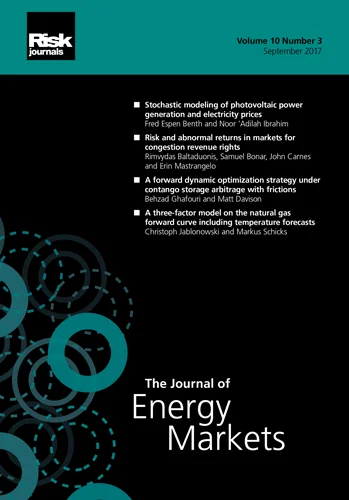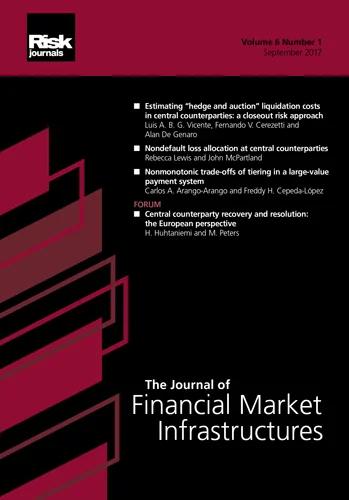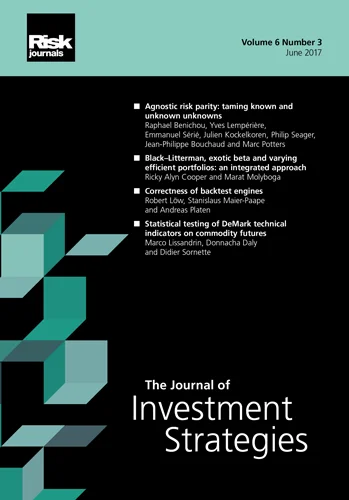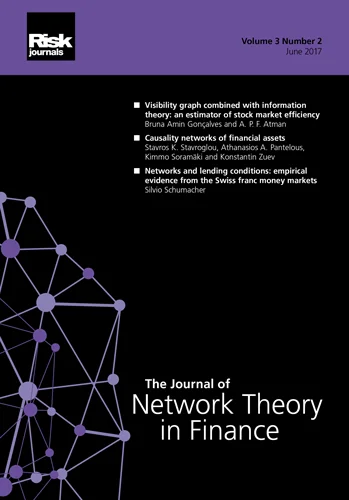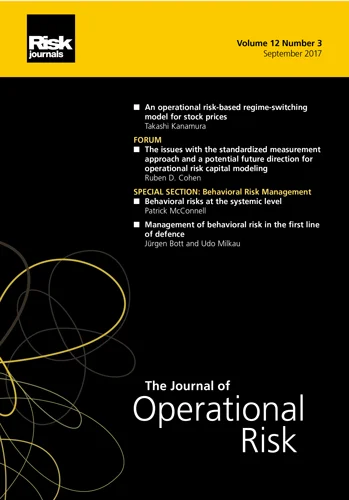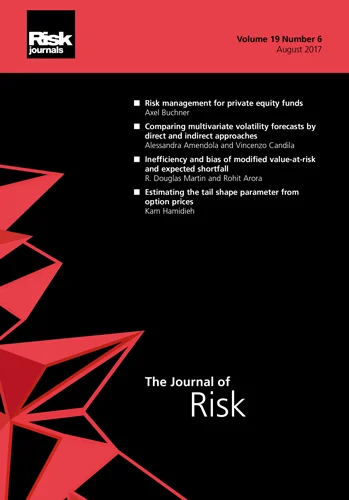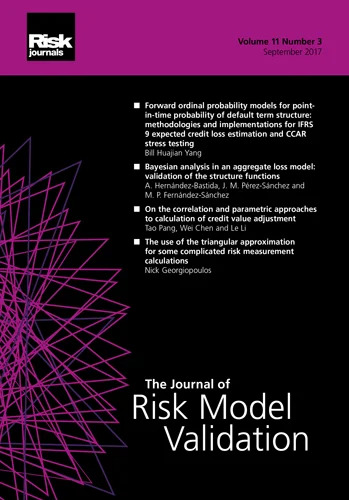Journal of Operational Risk
ISSN:
1755-2710 (online)
Editor-in-chief: Marcelo Cruz
About this journal
Of the main areas of risk management, operational risk has the shortest history, with the industry beginning to give it serious consideration only 25 years ago. In that time, the industry has made great strides in both the definition and quantification of operational risk. The Journal of Operational Risk has been publishing papers at the forefront of this development since its inception.
On the quantification side, significant progress has been made, with major banks disclosing their operational risk exposures on a yearly basis. For many financial institutions their operational risk exposure is higher than that of market and credit risks. One large operational risk event can be lethal to a financial firm. Operational risk is thus a key concern for the industry as well as for the regulators that supervise financial institutions.
On the definition side, the industry has recently introduced the concept of “Non-Financial Risk” encompassing not just the early definition of operational risk but other risks like strategic, people, cyber, IT, etc. A broader view of operational risk would also consider Enterprise Risk Management, Cyber Risk Management, Information Technology Risks, Data Quality Risks amongst others. The introduction of new technologies like machine learning, artificial intelligence alongside new quantification ideas makes operational risk an intriguing risk domain with a green field for development and implementation of new ideas and theories.
With that in mind, The Journal of Operational Risk welcomes papers on non-financial risks as well as topics including, but not limited to, the following.
- The modeling and management of operational risk;
- Recent advances in techniques used to model operational risk, e.g., copulas, correlation, aggregate loss distributions, Bayesian methods and extreme value theory;
- The pricing and hedging of operational risk and/or any risk transfer techniques;
- Data modeling external loss data, business control factors and scenario analysis;
- Models used to aggregate different types of data;
- Causal models that link key risk indicators and macroeconomic factors to operational losses;
- Regulatory issues, such as Basel II or any other local regulatory issue;
- Enterprise risk management;
- Cyber risk management;
- IT risk management (how systems errors/fails impact an organization and change their risk profile);
- Big data applications to non-financial risk;
- Artificial intelligence and machine learning applications to risk management;
- Qualitative analysis of non-financial risks.
Journal Metrics:
Journal Impact Factor: 0.8
5-Year Impact Factor: 0.7
CiteScore: 1.3
Latest papers
Determining the perception of operational risk management practices based on demographic factors in the South African banking sector
The authors present and analyse a survey of various demographic groups and their perception and understanding of risk management in South African banks.
How has the anti-corruption campaign affected operational efficiency? Evidence from a quasi-natural experiment in China
The authors analyze how China's anti-corruption campaign impacted operational efficiency, and offer suggestions for policymakers in emerging economies hoping to improve corporate performance through institutional reforms.
Key principles for operational risk stress testing design and evaluation
The author surveys operational stress testing methods and proposes a conceptual framework for designing operational risk stress tests.</li>
National geopolitical risk perception and corporate innovation
The authors investigate how national geopolitical risk perception can impact corporate innovation behavior and its underlying mechanisms.
Addressing climate-related risks in banking: a framework for sustainable risk management and regulatory alignment
This paper puts forward a dual-layer approach to climate risk management with utilises root cause-based analysis and severity assessments to prioritize and address climate-related risks.
Perceived workplace accident frequency and its impact on employee withholding behaviors and perceived productivity
The authors analyze relationships between perceived workplace accident frequency, employee withholding and perceived productivity as well as the mitigating effects of perceived risk and active communication of safety measures.
Risk prevention and regulatory challenges in metaverse trading
This paper focuses on the regulatory model of the metaverse, discussing the regulation of assets found within the metaverse, issues surrounding censorship and possible legal responsibilities that could arise.
Mapping the influence of enterprise risk management: a systematic review and bibliometric analysis
The authors conduct a bibliometric analysis and systematic review to investigate the influence of enterprise risk management research.
A multiplier approach for nonparametric estimation of the extreme quantiles of compound frequency distributions
The authors propose a nonparametric method for estimating extreme quantiles of operational risk reserves by utilizing a lower quantile of the severity distribution.
Do bank complexities increase the risks? Insights from four Asian countries
Focussing on China, Malaysia, Pakistan and Qatar, the authors investigate how bank complexity impacts bank risk.
The role of banks’ digital transformation in operational risk management: evidence from China
The authors investigate the impact of banks' digital transformation on operational risk, finding that in most cases, this reduces operational risk,
Risk measures associated with insurance losses in Ghana
The authors investigate VaR and TVaR comprehensive motor insurance claims paid by an insurance company in Ghana and compare the estimates obtained by these risk measures.
The future of risk and insurability in the era of systemic disruption, unpredictability and artificial intelligence
The authors demonstrate the fragile nature of traditional risk management techniques in the face of frequent high-impact shocks and advocate for a new approach that treats disruption as systemic rather than episodic.
Enhancing organizational sustainability through human resource analytics: examining the moderating effect of organizational culture
Focussing on information-technology-based organizations, the authors investigate links between human resources analytics and organizational sustainability, finding HR analytics to enhance organizational sustainability.
Operational risk, capital regulation and model risk
The author proposes seven basic properties for operational risk modelling to form an operational risk management framework.
The robot-labeling phenomenon: robot-ready modern operational risk management
The author highlights misuse of the term "robot" in banking practice and the literature, proposes the robot-labelling phenomenon and recommends a shift in approaches to operational risk management to address challenges of the synthetic era.
Navigating risk horizons: a comprehensive bibliometric analysis of corporate risk management
The authors conduct a bibliometric analysis of 100 research papers to identify trends within corporate risk management.
Operational risk modeling under the loss distribution approach: estimation of operational risk capital by business line versus risk category
The authors apply the loss distribution approach to operational risk data, contributing to understandings of the composition and distribution of operational risk data across risk classes and the corresponding operational risk capital requirements
Operational risk and non-life insurers’ performance
The authors assess operational risk in the non-life-insurance sector, finding operational lapses and the cost–income ratio to have negative effects on premium growth and financial performance.
Operational risks: trends and challenges
The authors carry out a systematic literature review of operational risk research to determine the current state of operational risk research in financial institutions.
